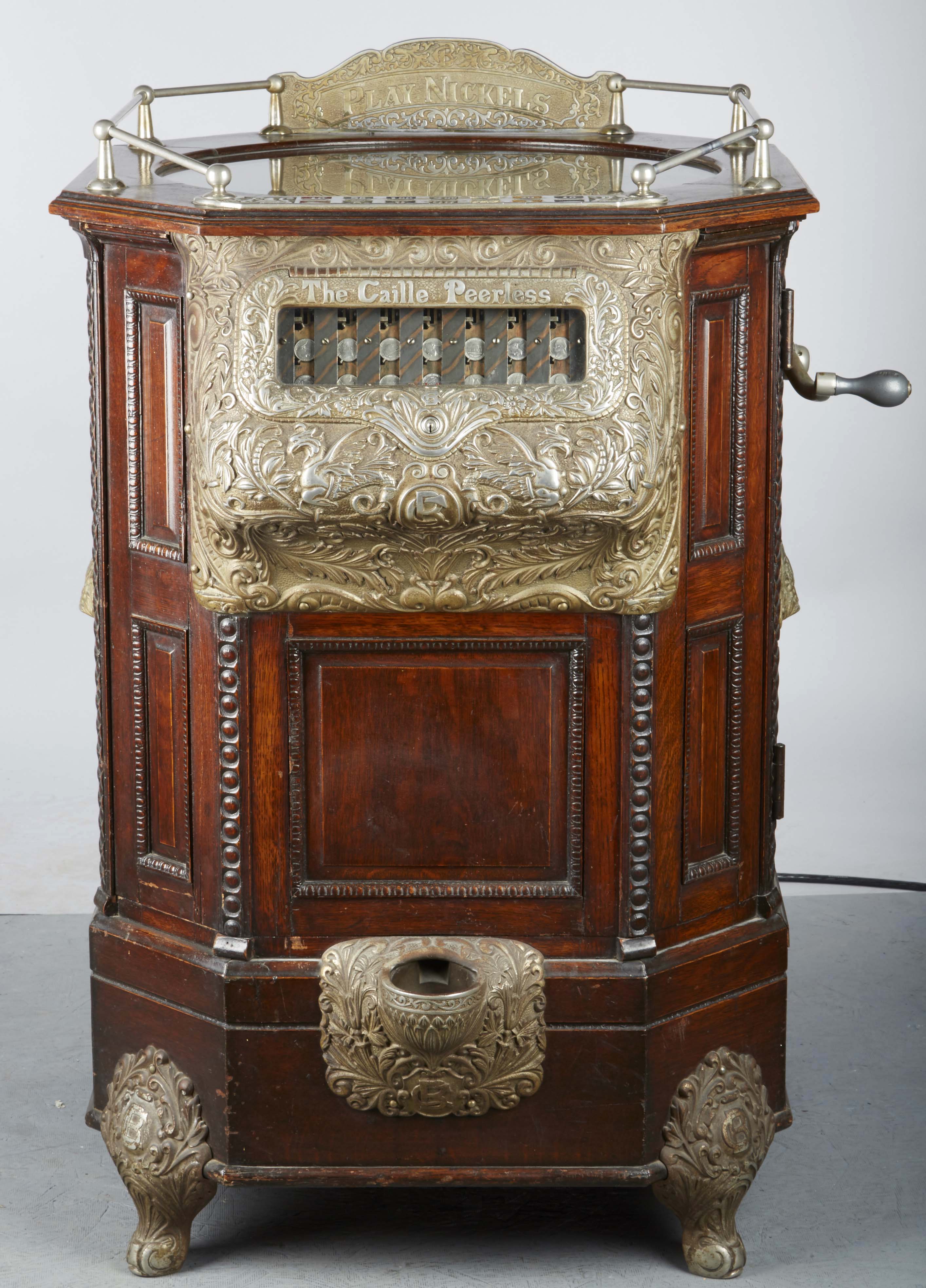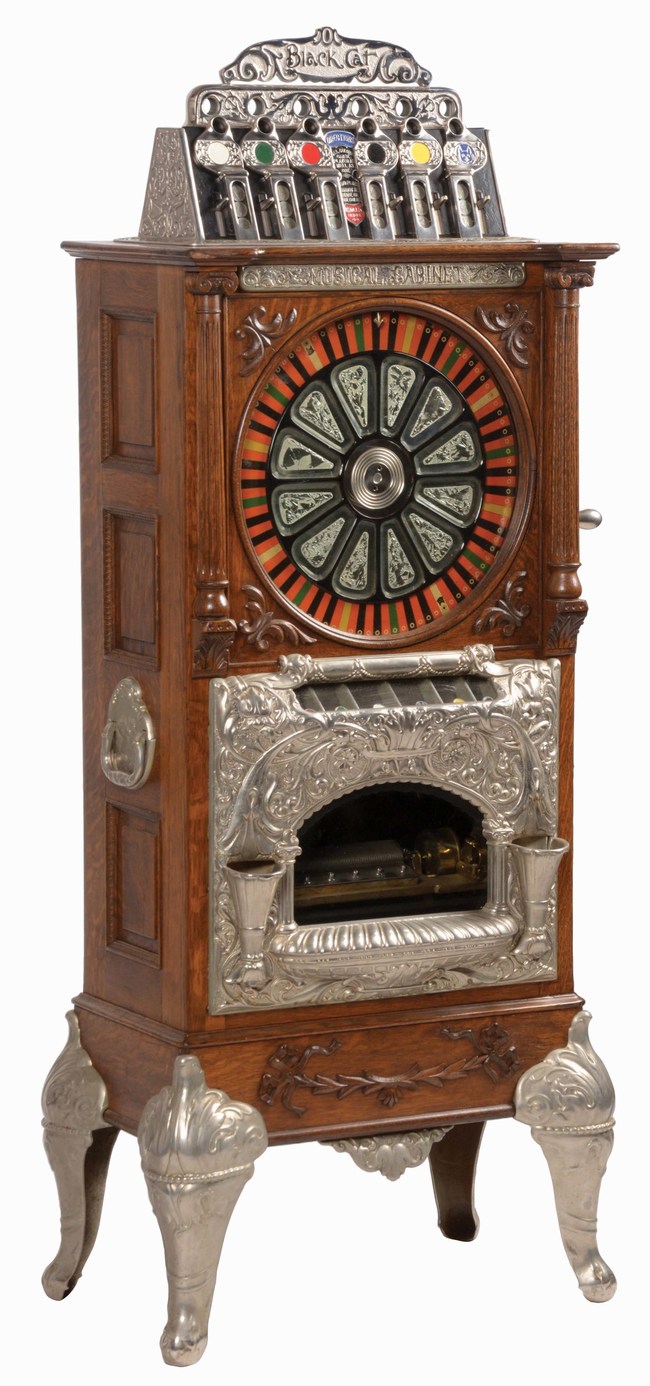Antique Gambling Machines For Sale
This is the most popular antique replication slot machines. This is a famous Mill’s 1948 Golden Nugget which is in mint condition and complete with a mechanical pull arm. This machine consists of 10% or more of the original Mill’s parts and the rest made from the original die casting modes from the original 1948 Mill’s.
Gambling can be a lot of fun but it’s only as entertaining as the machine you’re playing on is functional. A bad slot machine not only bores players but also ruins the credibility of your place. Buy slot machines in excellent and prime working condition to make sure your guests are always entertained to the fullest! A wide variety of gambling machines for sale options are available to you, There are 2,270 suppliers who sells gambling machines for sale on Alibaba.com, mainly located in Asia. The top countries of suppliers are China, Taiwan, China, from which the percentage of gambling machines for sale supply is 96%, 3% respectively.
Secure Order Form
We also have:
Beer Barrel Trade Stimulator |
.
.
.
Mills PerfectionPrice: SOLD plus $49 shipping ($59 shipping west of Denver). To Order: use SECURE ORDER FORM Other Inquiries, email: durham@GameRoomAntiques.com |
.
Cent A Pack Circa 1935s, made by Buckley ManufacturingCompany |
.
.
Art Decocirca 1933, made by Garden City Novelty Company and features real cigarette packs in the bottom of the machine | SOLD | SOLD |
.
.
More Trade Stimulators

Decorating Your Gameroom
- Vintage Gas Pumps for Sale
.
.
HISTORY OF TRADE STIMULATORS
Trade stimulators, as the name implies, were designed to stimulate business either by attracting customers into a specific store or by giving the customer another reason to spend his loose change when paying for merchandize.Even though trade stimulators were extensively used in the 1890s, they weren't called trade stimulators until 1907 when the Mills Novelty Company used the term in one of its catalogues.
The most popular early trade stimulators were the Bicycle and the Fairest Wheels. With both of these machines the weight of a penny caused a wheel to rotate and, like a carnival wheel, the player hoped the wheel would stop on a high number so that he could win multiple cigars or other merchandise. Other popular machines during this era were the penny drops and flips.
The bartender or store attendant paid winners over the counter since trade stimulators did not automatically pay out cash like slot machines. Winners usually received free merchandise, such as a cigar or a pack of cigarettes. Some trade stimulators had automatic token dispensers so that the store attendant didn't have to be called every time there was a winner. These tokens were stamped with the store's name or the winning value, such as 'Good For A Free Cigar' or 'Good for 5ó in Trade'.
Although trade stimulators became less popular for a period, their popularity rebounded in the 1930s. Many operators utilized them instead of slot machines because there were lower in cost and smaller in size, as well as needing fewer repairs and posing less legal problems. By the late 1930s, trade stimulators were increasingly becoming known as counter games.
Many trade stimulators, especially those made in the 1930s and 1940s, also dispensed gumball. The gumball feature allowed operators to claim that the stimulators were vending machines and not gambling devices. Operators claimed that the machine were made to dispense gumballs for a coin and that the spinning reels were for amusement purposes.
The 1930s trade stimulators were generally ornate and appealing to the eye, while in the 1940s they became more utilitarian. After the Johnson Act, which made gambling machines illegal, was passed in the early 1950s, merchants started using punchboards instead of trade stimulators.
For a list of trade stimulators available for sale, visit the Trade Stimulator Sales List
For a list of Trade Stimulator Manufacturers and Game Names, visit the Manufacturer and Game List Web PageCopyright: 1996 Ken Durham.
.
.
.
Go back to Sales Lists, Wanted Lists and Trade Lists menu. Go back to GameRoomAntiques
Go back to GameRoomAntiquesFor more information on:Who We Are & Our Privacy Policy
Ken Durham
GameRoomAntiques
Email: durham@GameRoomAntiques.com
Secure Order Form
We also have:
Beer Barrel Trade Stimulator |
.
.
.
Mills PerfectionPrice: SOLD plus $49 shipping ($59 shipping west of Denver). To Order: use SECURE ORDER FORM Other Inquiries, email: durham@GameRoomAntiques.com |
.
Cent A Pack Circa 1935s, made by Buckley ManufacturingCompany |
.
.
Art Decocirca 1933, made by Garden City Novelty Company and features real cigarette packs in the bottom of the machine | SOLD | SOLD |
.
.
More Trade Stimulators
Decorating Your Gameroom

- Vintage Gas Pumps for Sale
.
.
HISTORY OF TRADE STIMULATORS
Trade stimulators, as the name implies, were designed to stimulate business either by attracting customers into a specific store or by giving the customer another reason to spend his loose change when paying for merchandize.Even though trade stimulators were extensively used in the 1890s, they weren't called trade stimulators until 1907 when the Mills Novelty Company used the term in one of its catalogues.
The most popular early trade stimulators were the Bicycle and the Fairest Wheels. With both of these machines the weight of a penny caused a wheel to rotate and, like a carnival wheel, the player hoped the wheel would stop on a high number so that he could win multiple cigars or other merchandise. Other popular machines during this era were the penny drops and flips.
The bartender or store attendant paid winners over the counter since trade stimulators did not automatically pay out cash like slot machines. Winners usually received free merchandise, such as a cigar or a pack of cigarettes. Some trade stimulators had automatic token dispensers so that the store attendant didn't have to be called every time there was a winner. These tokens were stamped with the store's name or the winning value, such as 'Good For A Free Cigar' or 'Good for 5ó in Trade'.
Although trade stimulators became less popular for a period, their popularity rebounded in the 1930s. Many operators utilized them instead of slot machines because there were lower in cost and smaller in size, as well as needing fewer repairs and posing less legal problems. By the late 1930s, trade stimulators were increasingly becoming known as counter games.
Many trade stimulators, especially those made in the 1930s and 1940s, also dispensed gumball. The gumball feature allowed operators to claim that the stimulators were vending machines and not gambling devices. Operators claimed that the machine were made to dispense gumballs for a coin and that the spinning reels were for amusement purposes.
The 1930s trade stimulators were generally ornate and appealing to the eye, while in the 1940s they became more utilitarian. After the Johnson Act, which made gambling machines illegal, was passed in the early 1950s, merchants started using punchboards instead of trade stimulators.
For a list of trade stimulators available for sale, visit the Trade Stimulator Sales List
For a list of Trade Stimulator Manufacturers and Game Names, visit the Manufacturer and Game List Web PageCopyright: 1996 Ken Durham.
.
.
Antique Gambling Machines For Sale By Owner
.
Go back to Sales Lists, Wanted Lists and Trade Lists menu.Go back to GameRoomAntiques
For more information on:Who We Are & Our Privacy Policy
Casino Machines For Sale
Ken Durham
GameRoomAntiques
Email: durham@GameRoomAntiques.com
Secure Order Form